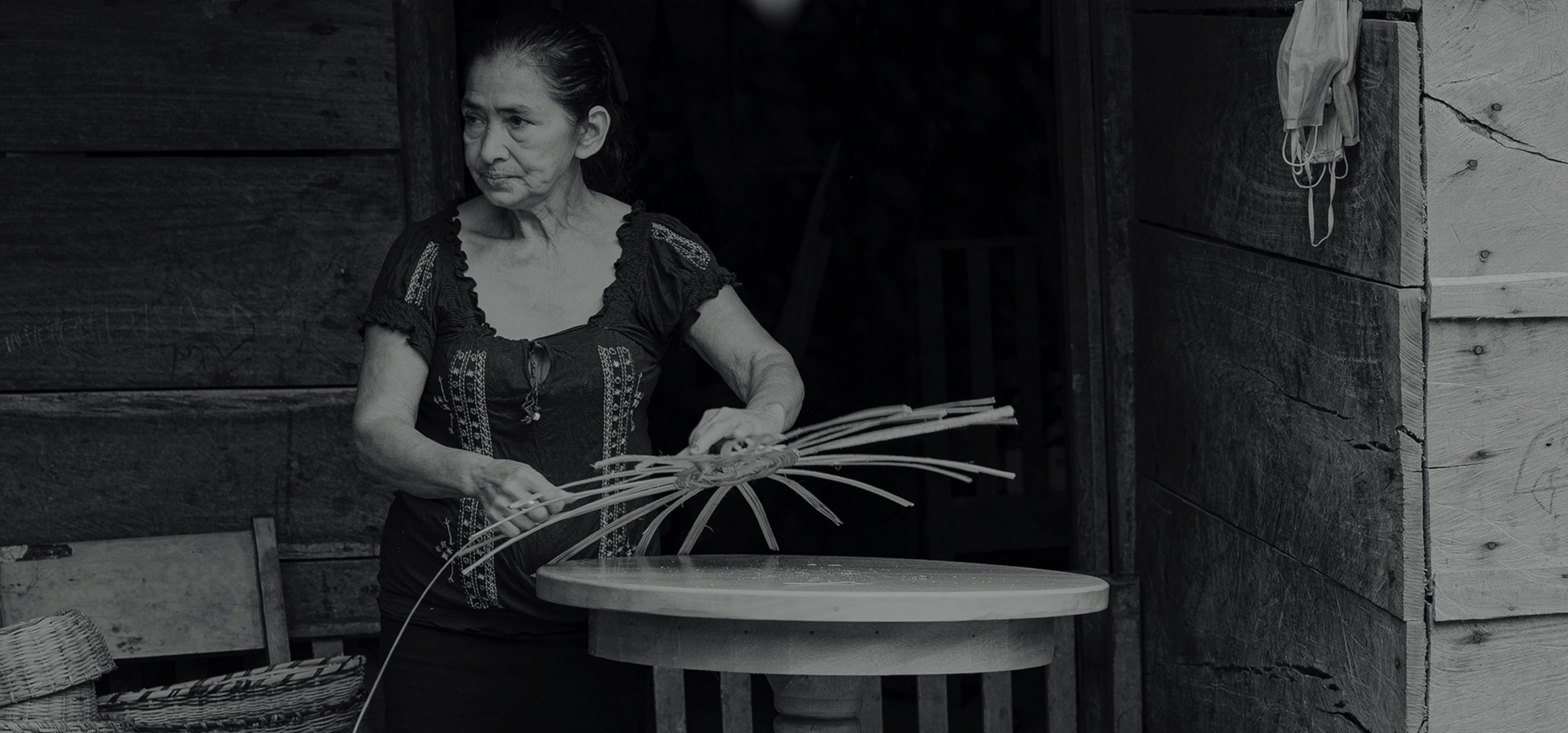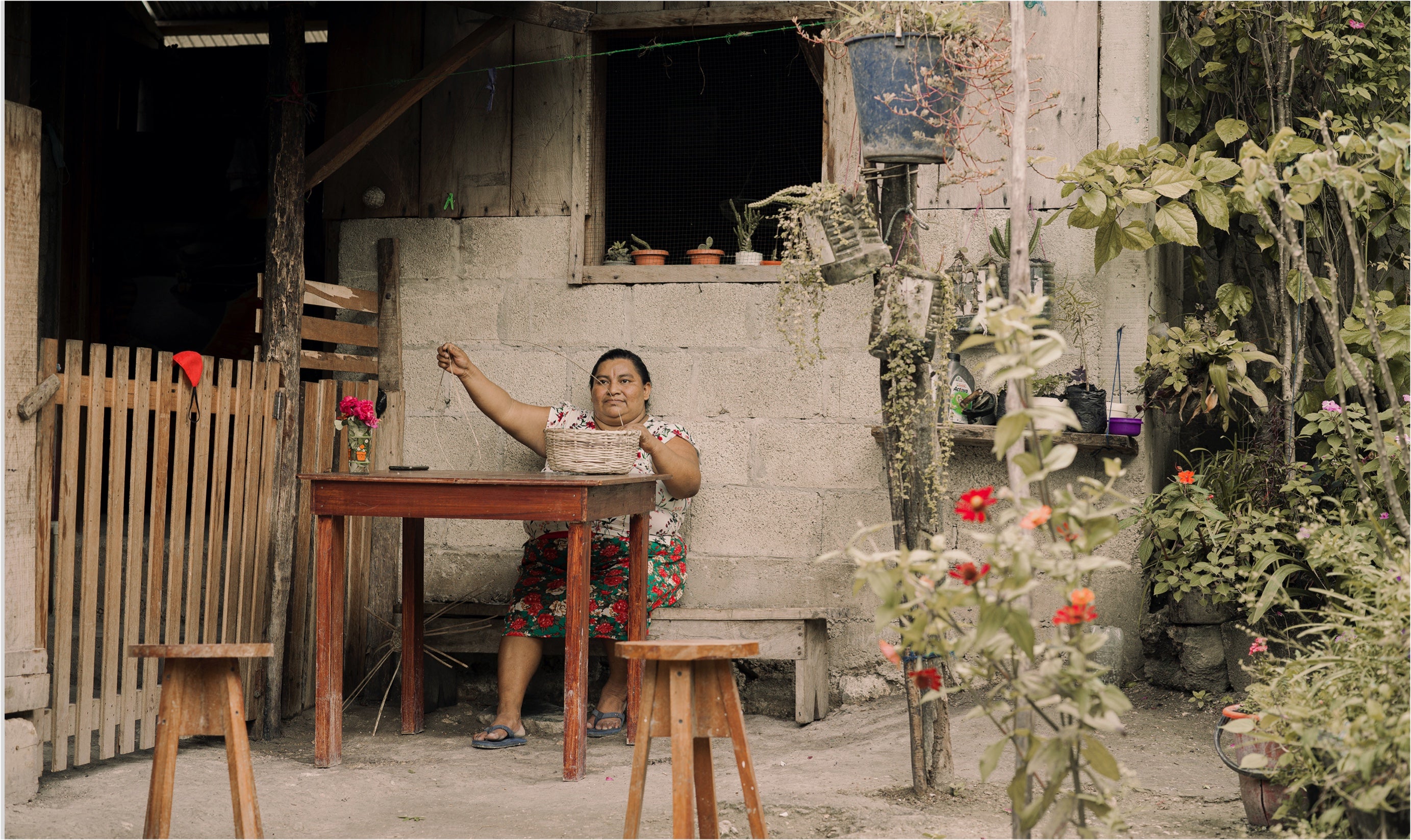Gifting has never been easier
Perfect if you're short on time or are unable to deliver your gift yourself. Enter your message and select when to send it.
Story by Diana Keeler

The Mother and Daughter team behind Itza Wood, Suzanne and Eliza Babarczy, are unstoppable forces of nature doing good for people and the planet. They founded Itza Wood to showcase the region’s beautiful natural woods, to support the local economy, and to fund social initiatives including employment and education. And they created the new Fiber Collection initiative to help women from isolated rural communities learn a valuable new skill set that would help generate much needed income for them and their families.
“When the pandemic hit and everything shut down, we didn't want to just sit still,” says Eliza Babarczy, who, with her mother Suzanne, runs Itza Wood in Peten, Guatemala. Originally conceived of as a way to fund The Jungle School — an educational organization that Suzanne runs with her husband, Mario — Itza Wood employs local woodworkers while showcasing (and safeguarding) the region’s tropical hardwoods. While Itza Wood’s workshop remained open, Eliza Babarczy saw the labor slowdown elsewhere take a terrible toll on the local economy and on the families who depended on it, forcing more women into the job market. “It seemed like every conversation I would have, people were asking if I was hiring,” she says.
– Eliza Babarczy, co-founder Itza Wood
This new need dovetailed with conversations the Babarczys had been having with the Rainforest Alliance about a new initiative, with three priorities: to create jobs for women; to provoke product development using sustainable, natural resources; and to connect those goods to viable markets. From those discussions came a new association of crafters, producing a unique collection of products while restoring generations-old skills in weaving and basket-making to members of the local communities.
“While there is a tradition of weaving a couple of fibers from the jungle, it is dying out, and very few community members actually know how to weave the local fibers,” Eliza Babarczy says. “There was no established group in our communities to simply dive into product development with — we had to create the skill sets and found many women that were interested in learning.”

Local weavers generally focus on two organic materials harvested locally, but Babarczy and her team were eager to explore additional possibilities. “We ended up finding 30 fibers in the jungle that we could develop product with, and we were able to hire the locals with the knowledge to teach a group of 20 women wanting to learn and put their hands to work,” Babarczy says.

Women underwent six months of training and learned traditional weaving techniques that were fast disappearing. They also established a worker’s association and a brand: Fibras de la Selva.
All the participants underwent six months of training — not only on weaving techniques but on sales strategies and basic business practices as well. Instead of creating an in-house atelier, the women established a worker’s association and a brand: Fibras de la Selva. “All of the women are from the Itza Wood area and the villages that surround us, and while they don't work on site, we often have meetings at the Itza Wood offices, and they are always welcome in our space,” Babarczy says.

Itza Wood’s Fiber Collection initiative enables women from isolated rural communities to transform fibers from the jungle into beautiful, functional, and sellable wares, helping them to break out of the poverty cycle. Each worker creates the baskets in her own home, allowing her to manage her family responsibilities while earning money. While the Itza Wood team “guided” the designs of the group’s first collection of baskets, Babarczy says that she hopes the crafters will take those shapes and push them in new directions. “We encourage them to use their creativity in product development,” she says. “Although these are our designs, we love to see the women come up with new ways to better their work and quality.”
In the meantime, the project has opened brilliant new avenues for Itza Wood, its customers, and its community. “With the richness of materials and endless possibilities in the jungle, we see the horizon full of potential,” Eliza Babarczy says. New wealth, new products, and new artistic visions are now in play, thanks to these communal efforts. Most importantly, the women of Fibras de la Selva now have more agency within their homes, their communities, their worker’s association, and their own creative imaginings, Eliza Babarczy says. “We are committed to seeing them grow and prosper.”
Your Shopping Cart is Empty
Browse our latest collection or check your saved favorites to add more items to your cart.




Manage your profile, track your orders, and enjoy a seamless shopping journey with us.